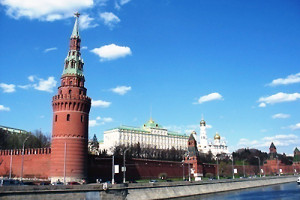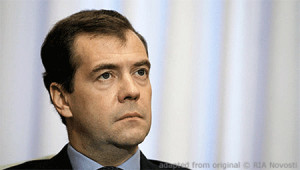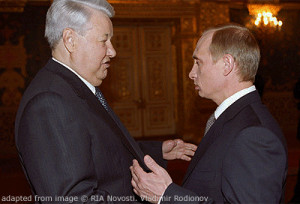Russia’s Struggle Over the Meaning of the 1990s and the Keys to Kremlin Power

(PONARS Eurasia – Gulnaz Sharafutdinova – May 7, 2019)
Gulnaz Sharafutdinova is Reader at King’s Russia Institute, School of Politics & Economics, King’s College London.
(PONARS Eurasia Policy Memo) The days of political promise the Russian liberal opposition enjoyed during 2011-12 when the “angry urbanites” protested against the regime, are long over. The Russian “progressive era” failed without even starting. Instead, the Kremlin undertook a conservative turn promoting the type of identity politics that enabled it to generate popular support for the country’s political leadership. The new, morality-driven identity politics emphasized Russia’s traditional values, culture, national patriotism, as well as the idea of the “enemy at the gate” that became especially prominent after the 2014 annexation of Crimea.  This new identity politics represented a replacement of the more rationalist paradigm of legitimation prevalent in the first decade of the 2000s and particularly under Dmitry Medvedev’s presidency. The Kremlin’s conservative values-based agenda, underscored by the growing influence of the Orthodox Church and the Russian parliament’s activism in promoting conservative legal initiatives, have been widely discussed. But the crucial role of the 1990s in the Kremlin’s legitimation strategy has not yet been fully understood or recognized.
This new identity politics represented a replacement of the more rationalist paradigm of legitimation prevalent in the first decade of the 2000s and particularly under Dmitry Medvedev’s presidency. The Kremlin’s conservative values-based agenda, underscored by the growing influence of the Orthodox Church and the Russian parliament’s activism in promoting conservative legal initiatives, have been widely discussed. But the crucial role of the 1990s in the Kremlin’s legitimation strategy has not yet been fully understood or recognized.
Framing the 1990s as a collective trauma for the population is one of the leadership’s most potent strategies for harnessing group emotions in the pursuit of its political aims. Kremlin decisions and policies are frequently, even routinely, defended with reference to the need for avoiding the conditions of the 1990s. Even more than this, however, the internalized and socially shared representation of that decade is the foundational stone-the scarecrow in the public imagination-that conditions and props up the current political system in Russia. Russia’s liberal opposition thus needs to evaluate and (re)define its reference points vis-à-vis the 1990s in a manner that would speak both to the losers and the winners from the transition if it is to make attractive appeals to voters.
The Content of the Frame about the 1990s
 If one trusts Gleb Pavlovsky, one of the architects of Vladimir Putin’s election victory in 2000, opposition to the 1990s was the birthmark of Putin’s presidency. His electoral strategists were looking for the glue that would create a winning coalition. Uniting people who lost out in the 1990s changes-especially those who depended on the state for their employment and salaries-was one of the major political strategies used to build a broad pro-Putin majority. Twenty years after the strategy was conceived, this way of framing the era persists and has been transformed from an electoral tool into an important ideological pillar for Putinism. The public resonance of this narrative enhances its political expediency, thus turning it into a lasting “legitimation frame” that is systematically reinforced and disseminated through state-controlled media.
If one trusts Gleb Pavlovsky, one of the architects of Vladimir Putin’s election victory in 2000, opposition to the 1990s was the birthmark of Putin’s presidency. His electoral strategists were looking for the glue that would create a winning coalition. Uniting people who lost out in the 1990s changes-especially those who depended on the state for their employment and salaries-was one of the major political strategies used to build a broad pro-Putin majority. Twenty years after the strategy was conceived, this way of framing the era persists and has been transformed from an electoral tool into an important ideological pillar for Putinism. The public resonance of this narrative enhances its political expediency, thus turning it into a lasting “legitimation frame” that is systematically reinforced and disseminated through state-controlled media.
This frame is captured in Russian language using the term likhie devyanostye (rough or wild 1990s), which conveys a sense of that period as a time of trouble, hardship, and violent disorder. The specific ideas as to why the decade was a difficult period depends on the spokespeople who promote the frame. References to unemployment, unpaid salaries, violent racketeers, and criminality are used side-by-side with complaints about greedy oligarchs and self-serving elites selling the country off to the highest bidder. Nikita Mikhalkov’s 2007 television documentary made for Putin’s 55th birthday was one of the first propagandistic materials that very effectively relied on this frame.
What Mikhalkov’s television program focused on was (1) the nature of the situation and the problems that Putin inherited from the 1990s followed by (2) Putin’s achievements in the short period since then. The documentary describes the state of the country using references to societal confusion, wild bandits (likhie razboiniki), impoverishment, foreign debt, wage delays, terrorism, army disintegration, and, finally the pinnacle of the Kursk submarine tragedy in 2000 that became a threshold, an indicator, that the Russian state was at the brink of collapse. Mikhalkov’s references to semibankirshchina, meaning when the country was ripped apart when seven post-Soviet bankers divided it amongst themselves, were especially fiery. “The country was kneeled down in front of several individuals,” Mikhalkov’s documentary narrated, and “The country had to give up to them its riches.” (To which the infamous Russian oligarchs ostensibly suggested, “We will not let you die, but you have to give up everything.”) Following such dramatic depictions, Putin’s historical entry is that of a savior and his governing results are nothing short of stunning.
The accolades went on, some certainly warranted. Russia joined the ten biggest world economies in the 2000s. Russian regions forgot about unemployment. National projects in healthcare, education, science, and agriculture sought to revitalize Russian infrastructure and human capital. Pacification of Chechnya meant that the danger of territorial disintegration was gone and Grozny became a city of which people were jealous. Traditional religions united around the state. Russia has consolidated and was ready for its destiny as a world leader. Mikhalkov also made a special reference to the 2007 reconciliation of two Russian Orthodox Churches: the Russian Orthodox Church Outside Russia and the Moscow Patriarchate. All these achievements, Mikhalkov claimed, were associated with the president, his personal qualities, and his systematic constructive service in the interests of the country.
Through to today, this frame has been adopted by many pro-Kremlin media personalities and is actively exploited during political talk shows and news coverage. Vladimir Solovyev, arguably the most notable media personality on Russia’s media scene today, employs the anti-1990s frame often and sometimes makes it a central focus of his television and radio talk shows. Vladimir Putin himself uses this frame in his political speeches and interviews.
The Counter-Frame on the 1990s
Many Russian political commentators understand the significance of the 1990s for present-day political legitimation and political stability in Russia. Over the last few years, and specifically since 2015, signs of cultural counter-mobilization against the dominant representation of the 1990s have emerged. A project developed by the Yeltsin Center in Yekaterinburg and Colta.ru named Ostrov-90kh is arguably the most important sign of these developments. The project involves annual cultural festivals that bring together writers, artists, singers, film critics, and photographers to share their impressions about the most important creative artifacts of the 1990s. Russian political and cultural analyst Sergei Medvedev’s conversation with Russian media professionals (mostly liberal-oriented) revealed that the 1990s could be viewed as a time of freedom and a shared sense of openness and opportunities-a time of creative explosions with new cinematography, media, poetry, cartoons, paintings, literature, journals, and newspapers.
The Facebook flashmob “moi 90e”-held every autumn since 2015-is yet another indication of the fact that many Russians, especially those who are more educated and successful, disagree with the dominant view of the 1990s. The flash mob features nostalgia and sentimentality with regard to the decade, expressed by those who entered adulthood in the 1990s and who, from the height of their current achievements, can look into their past with a sense of nostalgia and longing. In short, those who experienced the 1990s first-hand and who find themselves part of the more well-to-do groups in society do not necessarily succumb to caricaturized and all-black view of this period.
The question that stands out, though, and the question that is politically relevant for Russia’s future, is whether those who have not experienced the 1990s first-hand will follow the dominant representation or reject it. The future is in the hands of the children of the above group. It is hard to expect that the Ostrov-90kh or “moi 90e” counter-frames will find a wide following in Russia, at least in the short to medium term. The popularity of the Kremlin-propagated view of the 1990s can be seen through recent cultural productions, such as young Russian pop singer Monetochka’s song titled “90,” that expresses some irony, nostalgia, and sentimentalism for that era but more so displeasure and shock about the lawlessness and crime.
Countering the Counter-Frame
Pro-Kremlin political analysts, especially those who are more ideologically inclined, understand the high stakes involved in differing domestic reviews of the 1990s. The official reaction to the Ostrov-90kh festival was derogatory and dismissive. News anchors, such as those on Rossiia 24 on August 22, 2016, quickly shifted attention from the festival’s ideas to what the festival missed, such as the 1990s racketeers (bratki), impoverished pensioners, political chaos, food rationing, and pessimism (chernukha). The festival organizers were accused of promoting nostalgia for the difficult 1990s, and, even psychological manipulations through the use of neurolinguistic programming; viewers were warned of the dangers of confusing freedom with anarchy and were advised to stay vigilant of any such 1990s counter-framing.
The denunciation of countering frames continued in 2017 and 2018. Russian pro-Kremlin intellectual Sergei Kurginyan argued fiercely in June 2017 on the talk show “An evening with Vladimir Solovyev” that the counter-frame about the 1990s associated with the Yekaterinburg Yeltsin Center is part of the political struggle to discredit Putin’s rule. In an intriguing and revealing reversal of the argument, he suggested that their disavowal of the likhie-90s is occurring only in a specific moment and for a specific political purpose; that it is not about artistry but a cleverly thought-out anti-Putin political action/movement. According to Kurginyan, this was an unacceptable attempt to shift the discourse from likhie-90s to sacred-90s. Kurginyan, an ideological crusader, did his best to introduce numbers and facts on the show that demonstrated the truths behind the predominant frame. However, he unintentionally revealed and confirmed the crucial importance of needing to stick to the core narrative on which rests Russia’s current political establishment. In 2018, Solovyev also verbally attacked Boris Nadezhdin, who was representing liberal and alternative views, on his show (Vecher s Solovyevym on November 13 and 15) that further illustrates the ongoing political stakes associated with advancing the “correct” and “incorrect” depiction of the 1990s.
Conclusion
What conditions are required to bring wider public resonance of a more positive vision of the 1990s? It is evident that the negative framing of the decade resonates among the Russian “losers” of the transition. The “winners,” however defined, would probably buy more easily into the argument of “no pain, no gain,” especially if this argument is made under the conditions of a growing economy and improving social conditions. And one can say that the “losers” of the transition benefitted from the 2000s’ economic growth, vibrancy, and growing prosperity, so why indeed would they be nostalgic? The problem is that the post-1990s era, which saw political stability and improved social and economic well-being, could have been a ripe time for the government to defend Russia’s political and economic reforms of the 1990s by demonstrating their beneficial results and showing the linkages of economic improvements to the painful reforms undertaken earlier. Instead, it was used by the leadership for a different purpose, to institute their regime. That goal required the Kremlin to distance from and oppose the 1990s reforms and those responsible for them. Given the popular acceptance of the Kremlin’s frame of the 1990s and the Kremlin’s clampdown on alternative chronicles of Russia’s own recent history, the future struggle for the hearts and minds of the Russian electorate should probably not focus on challenging the dominant frame of the 1990s. That would mean engaging in a fight impossible to win. But what new, different agenda can the Russian liberal opposition find that could engage the public in terms of their emotions and identities? Thinking through the type of politics that could unite and consolidate centrist and liberal Russians appears to be the biggest challenge in the Russian political system today.
Article also appeared at ponarseurasia.org/memo/russias-struggle-over-meaning-1990s-and-keys-kremlin-power bearing the following notice:
PONARS Eurasia © 2019 All rights reserved
with the text “Permissions & Citation Guidelines” linking to ponarseurasia.org/permissions-citation-guidelines, which, in turns, bears the notice:
Permission:
Content by PONARS Eurasia may be re-distributed for Fair Use (non-commercial) purposes with credit provided to PONARS Eurasia and the author(s) and with a hyperlink/URL pointing to the original content page on this website.
